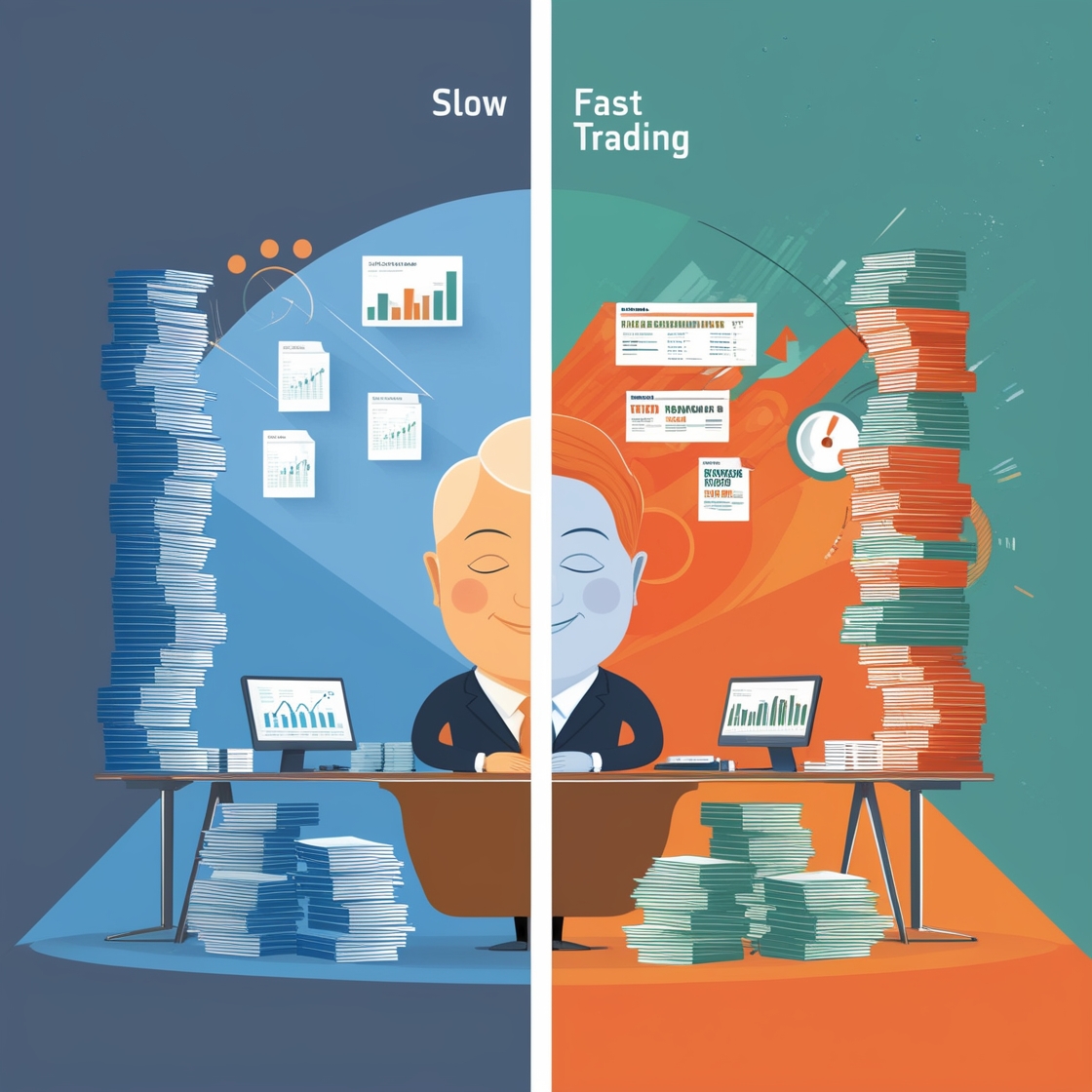Introduction
Trading in financial markets has evolved rapidly, making trade velocity—or the speed at which trades occur—a critical factor for traders. Whether you’re holding positions for seconds or years, the pace of trading significantly impacts your success. But how do you determine whether slow or fast trading suits you best? Let’s dive into the world of trade velocity, exploring its benefits, drawbacks, and how you can strike the perfect balance.
Understanding Trade Velocity
What is Slow Trading?
Slow trading refers to holding trades for days, months, or even years. This style focuses on long-term value, patient decision-making, and thorough analysis before execution.
What is Fast Trading?
Fast trading involves making quick trades—sometimes within seconds or minutes. Traders aim to capitalize on small price movements and high volumes. High-frequency trading (HFT) is a prime example of this approach.
Key Differences Between Slow and Fast Trading
- Timeframe: Slow trading is long-term, while fast trading is short-term.
- Risk: Fast trading carries higher short-term risks.
- Strategy: Slow trading relies on research and patience; fast trading depends on speed and real-time analysis.
The Rise of Fast Trading
Historical Perspective
The advent of electronic trading and automated systems has revolutionized the trading landscape. Gone are the days of paper slips and manual calculations—modern trading is lightning-fast.
Technologies Driving Fast Trading
Fast trading is powered by advanced technologies like:
- High-speed internet.
- Algorithmic trading systems.
- Artificial intelligence (AI) and data analytics.
Advantages of Fast Trading
- Immediate Gains
Fast traders can quickly exploit short-term price movements, leading to rapid profits. - Capturing Trends
Speed allows traders to enter and exit positions before the market changes direction. - Improved Liquidity
High-frequency trades add liquidity to the market, making it more efficient for all participants.
Disadvantages of Fast Trading
- Higher Risk
Fast-paced decisions can lead to mistakes and losses. - Emotional Stress
Trading rapidly can be mentally and physically exhausting. - Increased Transaction Costs
Frequent trades mean more brokerage fees, cutting into profits.
The Concept of Slow Trading
Historical Roots of Slow Trading
Slow trading has been around for centuries, focusing on long-term investment strategies like value investing. Investors like Warren Buffett swear by this approach.
Advantages of Slow Trading
- Lower Emotional Stress
With fewer trades, slow trading is less mentally taxing. - Reduced Transaction Costs
Holding positions long-term minimizes fees. - Long-Term Stability
Slow trading helps avoid market noise, leading to more predictable results.
Disadvantages of Slow Trading
- Missed Short-Term Opportunities
Slow traders may miss profitable short-term price swings. - Exposure to Market Fluctuations
Long-term holdings can be affected by unexpected market downturns.
Comparing Fast vs. Slow Trading
| Criteria | Fast Trading | Slow Trading |
|---|---|---|
| Time Horizon | Short-term | Long-term |
| Risk | High | Moderate to Low |
| Stress Level | High | Low |
| Profit Potential | Short-term gains | Steady long-term growth |
Finding Your Optimal Trade Velocity
Evaluate Your Goals and Risk Tolerance
- Are you aiming for quick profits or long-term gains?
- Can you handle the stress of fast trading?
Balancing Speed and Strategy
Some traders combine both approaches—holding long-term positions while executing short-term trades for additional profits.
Psychological Aspects of Trading
Whether you trade fast or slow, mental strength is key. Fast trading requires alertness and quick decisions, while slow trading demands patience and discipline.
Conclusion
Trade velocity isn’t about choosing between slow or fast trading—it’s about aligning your trading speed with your goals, risk tolerance, and market knowledge. By understanding the strengths and weaknesses of each approach, you can find your optimal trading strategy and thrive in the markets.
FAQs
- What is trade velocity, and why does it matter?
Trade velocity refers to the speed at which trades are executed. It affects risk, rewards, and trading outcomes. - How can I decide if slow or fast trading is better for me?
Evaluate your financial goals, risk tolerance, and trading knowledge to decide the best approach. - Are there tools to optimize my trading speed?
Yes, tools like trading platforms, AI systems, and backtesting software can help optimize trade velocity. - What are the risks of high-frequency trading?
High-frequency trading can lead to emotional stress, higher transaction costs, and increased risks. - Can I combine both slow and fast trading strategies?
Absolutely! Many traders blend both approaches for optimal results.
